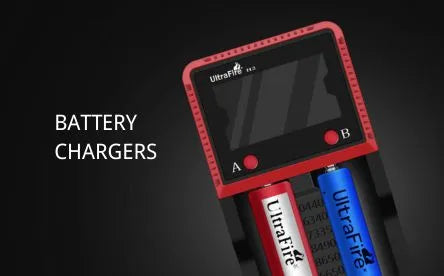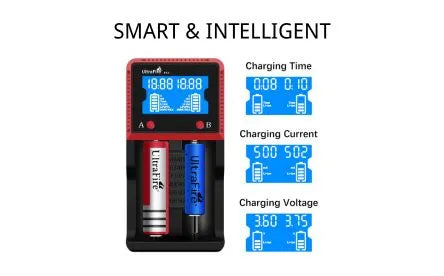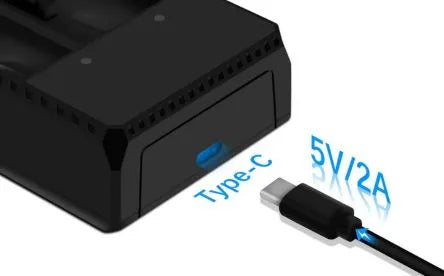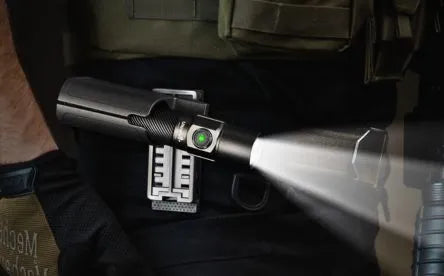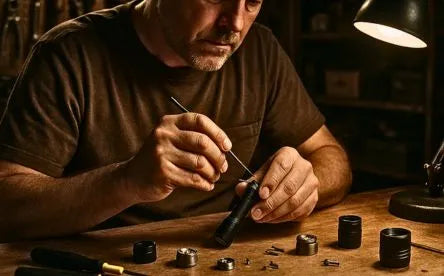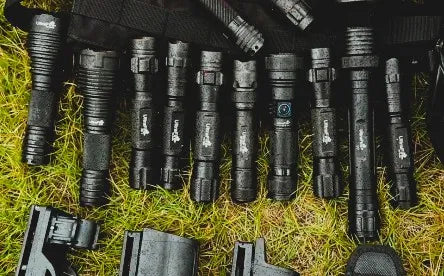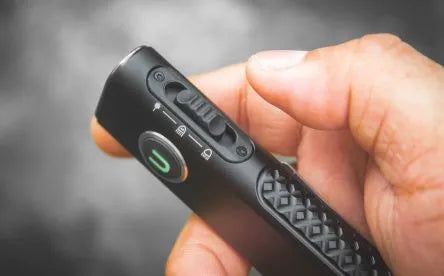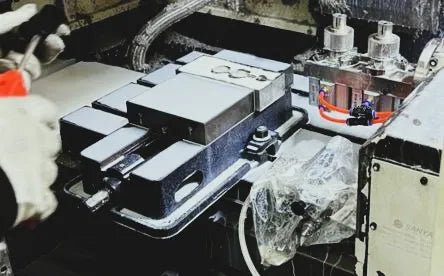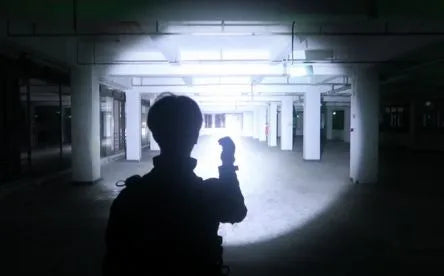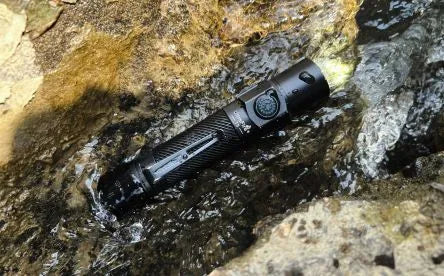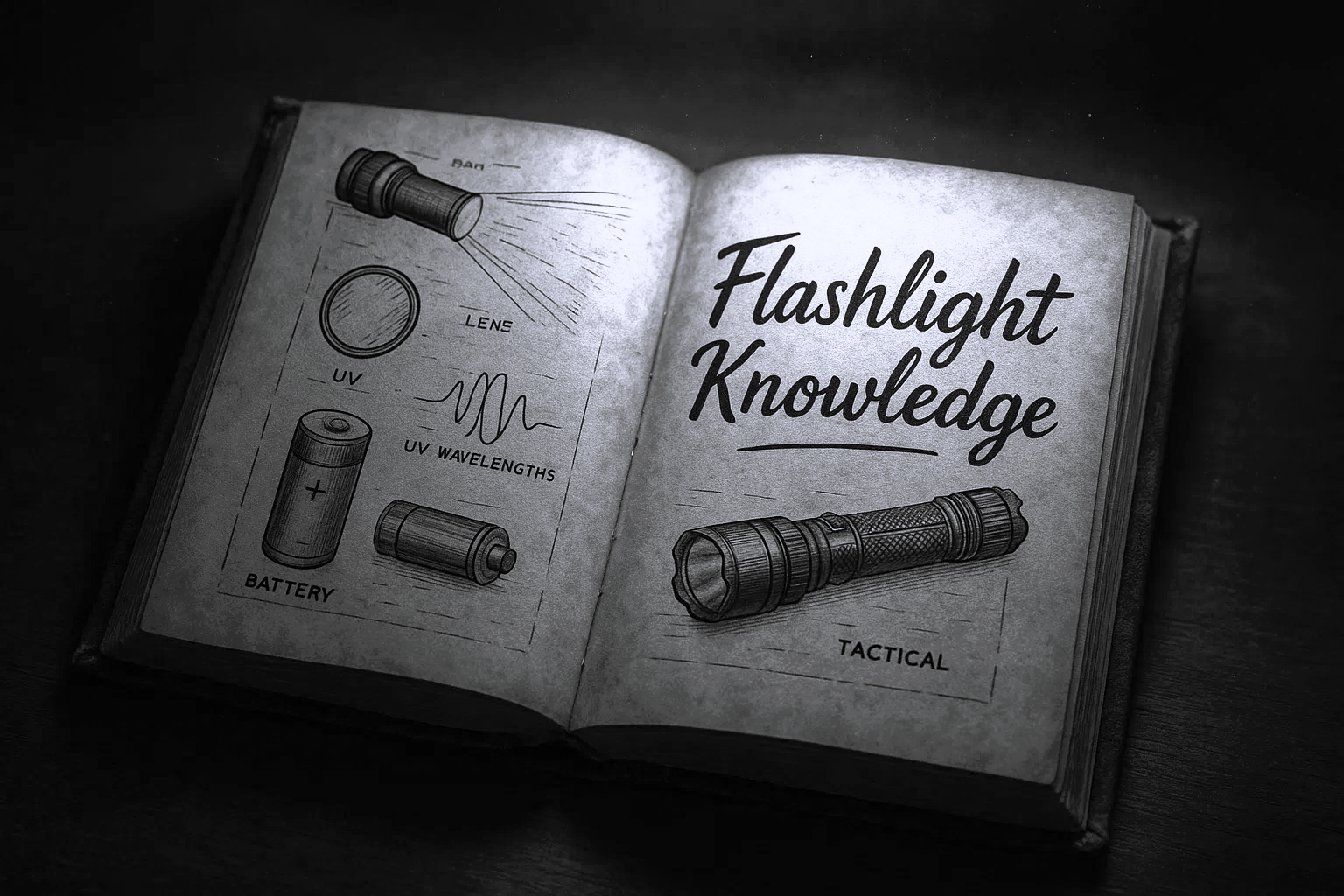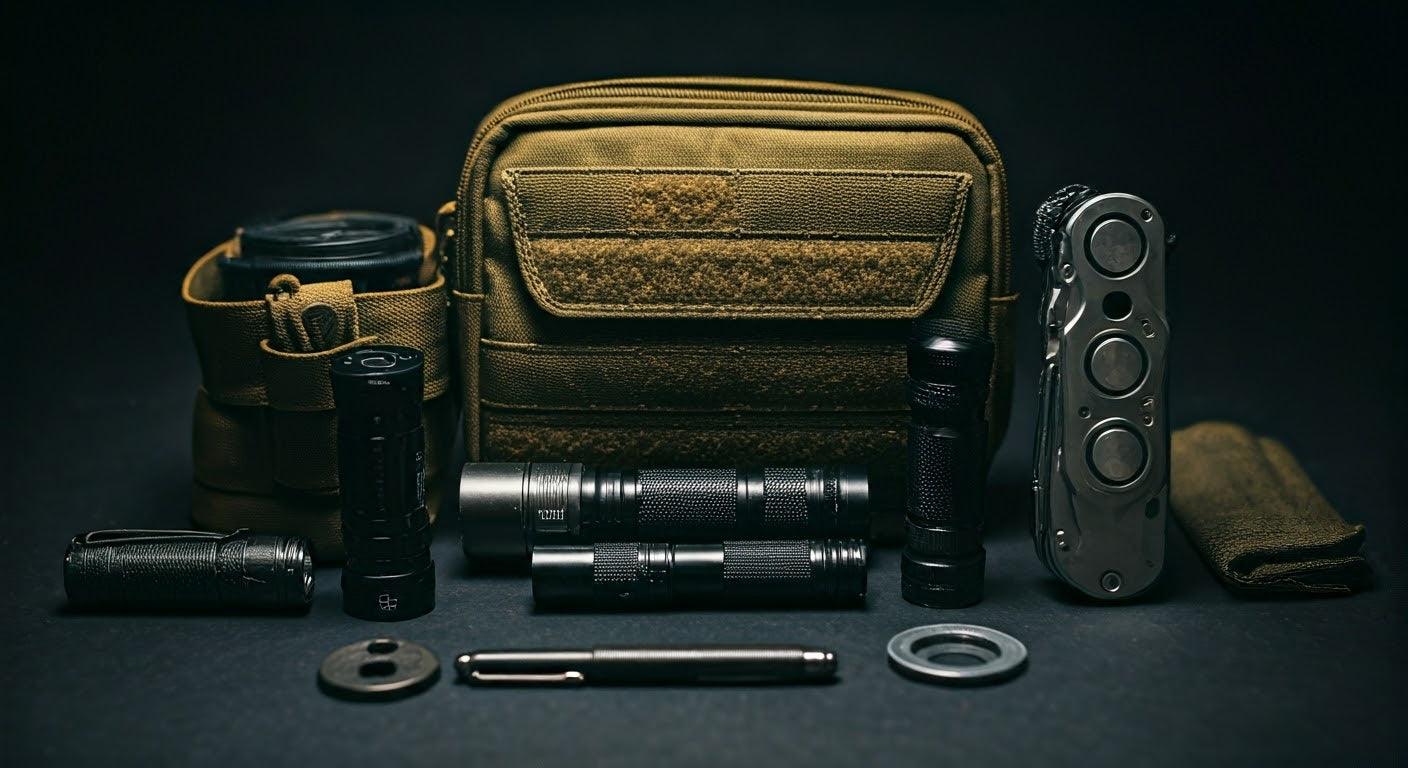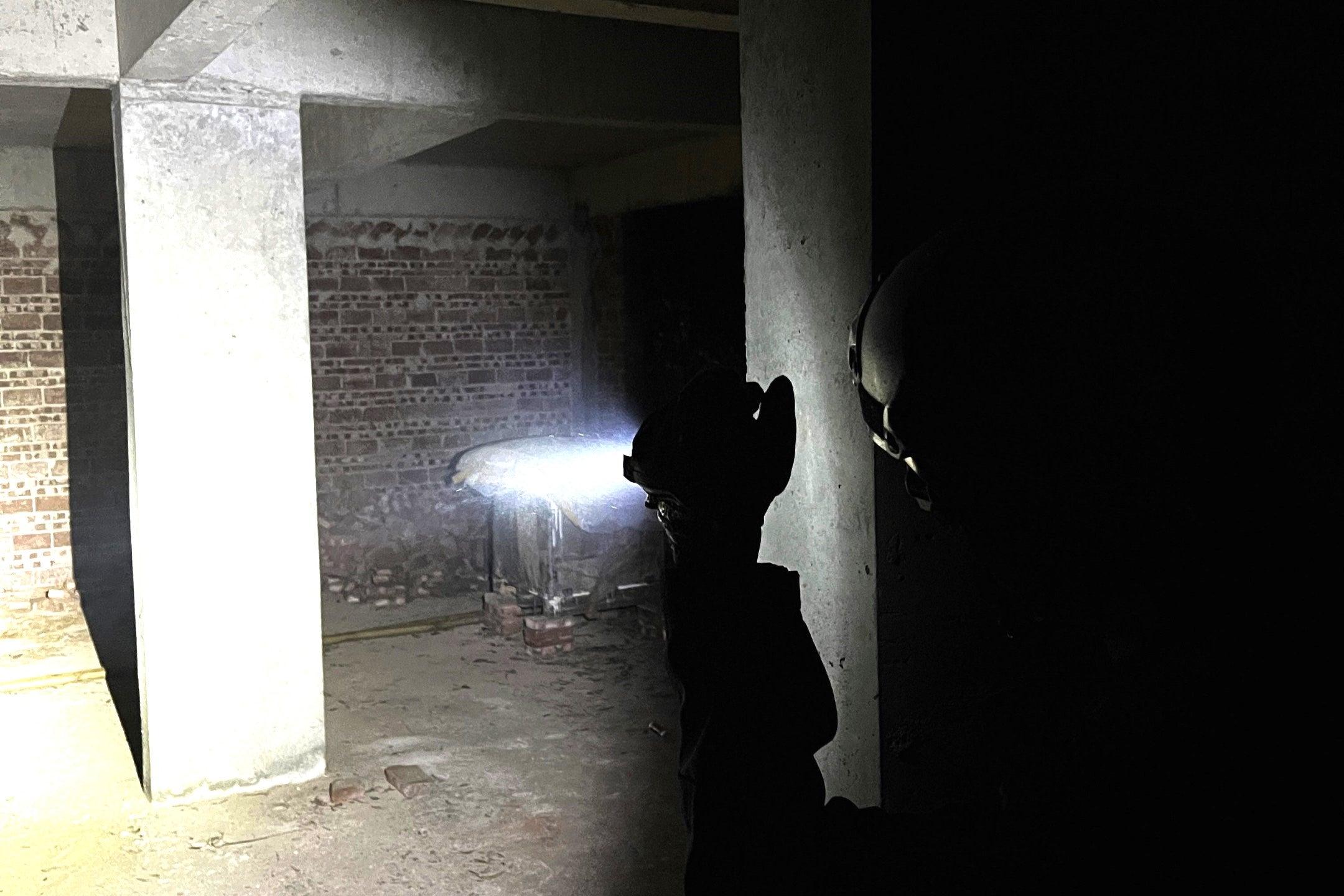Introduction
While most people are familiar with standard white light flashlights, colored and ultraviolet (UV) flashlights serve very specific purposes in various industries and hobbies. From enhancing visibility in low-light conditions to detecting hidden evidence, these specialized flashlights have become indispensable tools for many professionals and enthusiasts. In this article, we will explore the unique applications of red, green, and ultraviolet flashlights, explaining how each type of light can offer specific advantages in hunting, forensics, outdoor activities, and more.
1. Red Flashlights: Protecting Night Vision and More
What is a Red Flashlight?
Red flashlights emit light with a longer wavelength than white light, which results in reduced brightness but allows for better preservation of night vision. This makes them ideal for activities where maintaining natural night vision is essential.
Practical Uses of Red Flashlights:
-
Night Vision Preservation: Red light has the unique ability to preserve your night vision, which is why it's favored in military, hunting, and astronomy activities. When exposed to white light, the eye’s sensitive cells are shocked, which temporarily impairs night vision. Red light, on the other hand, doesn’t have the same impact, allowing your eyes to adjust faster and better in the dark.
-
Astronomy and Stargazing: For stargazing, astronomers often use red flashlights to read star charts, adjust telescopes, or navigate dark environments without losing their night vision. Red light doesn’t interfere with the human eye’s ability to see in the dark, which is critical when identifying celestial objects.
-
Tactical Operations: In law enforcement or military operations, red light is used during nighttime missions to avoid alerting enemies. Its subtle illumination provides enough light for tasks like map reading or equipment inspection without compromising the element of surprise.
-
Emergency Situations: In emergencies where you need to navigate in the dark without losing your night vision, such as during a power outage or when camping, a red flashlight is an invaluable tool for subtle and prolonged light.
Pros of Red Flashlights:
- Preserves night vision
- Ideal for low-light environments
- Doesn’t disturb others in the area
- Excellent for prolonged use in darkness
Cons of Red Flashlights:
- Lower intensity compared to white or other colored lights
- Limited visibility for tasks requiring high brightness
2. Green Flashlights: Balancing Visibility and Stealth
What is a Green Flashlight?
Green light falls between red and blue light on the color spectrum and offers unique visibility properties. Green flashlights are often used for activities where both brightness and stealth are required.
Practical Uses of Green Flashlights:
-
Hunting and Wildlife Observation: One of the primary uses of green flashlights is in hunting, particularly for nocturnal animals. Green light is less disruptive to wildlife than white light and can illuminate targets without startling or spooking animals. Many hunters prefer green light because it allows them to see game from a distance while remaining undetected.
-
Tracking and Stalking: For hunters or outdoors enthusiasts involved in tracking, green flashlights provide a good balance between visibility and stealth. Green light doesn’t affect the natural behavior of wildlife the same way a white or bright flashlight would, making it a valuable tool for tracking animals without scaring them off.
-
Military and Tactical Operations: Like red flashlights, green lights are also commonly used in military and law enforcement operations, particularly during surveillance or reconnaissance missions. Green light is bright enough to see objects clearly but is subtle enough to maintain operational stealth. It can also be used for reading maps or operating equipment while minimizing attention.
-
Fishing and Boating: Green light is often used for night fishing or in boating to spot fish without scaring them. Fish are less likely to be disturbed by green light, making it a popular tool for anglers working at night.
Pros of Green Flashlights:
- Less disruptive to animals and wildlife
- Offers bright visibility in low-light conditions
- Useful for stealthy activities like hunting and tracking
- Works well for tactical and outdoor operations
Cons of Green Flashlights:
- May not be as effective in very dark environments compared to white light
- Can cause eye strain after prolonged use in low-light settings
3. Ultraviolet (UV) Flashlights: Revealing the Hidden World
What is a UV Flashlight?
Ultraviolet (UV) light is invisible to the human eye but can be used to reveal things that are otherwise undetectable under normal light conditions. UV flashlights typically emit light with wavelengths shorter than visible light, allowing them to expose substances like bodily fluids, minerals, and hidden markings.
Practical Uses of UV Flashlights:
-
Forensic Investigations: One of the most common uses of UV flashlights is in forensics, where they are used to detect hidden evidence. UV light can make bodily fluids such as blood, urine, or semen visible, even if they have been cleaned up or are in trace amounts. It’s an essential tool for crime scene investigators who need to detect and analyze evidence that isn’t visible under regular lighting.
-
Scorpion and Insect Detection: UV flashlights are famously used for locating scorpions, as their exoskeletons fluoresce under UV light. This ability is often used by biologists and researchers to locate and study scorpions in the wild. Other insects, like some types of beetles, may also fluoresce under UV light, making UV flashlights useful for entomology research.
-
Mineral and Gemstone Identification: Certain minerals and gemstones fluoresce under UV light. Geologists and treasure hunters use UV flashlights to identify these materials while out in the field. Some minerals, including calcite, fluorite, and even some forms of quartz, are naturally fluorescent when exposed to UV light, making them easier to spot in the dark.
-
Detection of Counterfeit Money and Documents: UV flashlights are commonly used to check the authenticity of banknotes and documents. Many modern currencies have built-in security features that glow under UV light, making it easier to identify counterfeit money or documents.
-
Pet Stain Detection: UV flashlights are also useful for pet owners who want to locate hidden stains from pets. Urine stains from dogs or cats, in particular, are often invisible under normal lighting but can fluoresce under UV light, helping you clean up effectively.
-
Glow-in-the-Dark Items and Paint: UV flashlights are perfect for revealing glow-in-the-dark materials, whether it’s for inspecting a child’s toys, marking a hidden path, or locating specific objects in the dark. Glow-in-the-dark paints and materials are commonly used in art, safety, and emergency signage, and they can all be illuminated using a UV flashlight.
Pros of UV Flashlights:
- Detects hidden evidence, stains, and materials invisible under normal light
- Essential in forensic, security, and investigative fields
- Useful for a wide range of hobbies and activities, from hunting to geology
Cons of UV Flashlights:
- Limited range; UV light doesn’t travel as far as visible light
- May require special protective eyewear for prolonged use
- Can be costly, especially for high-quality models designed for professional use
4. How to Choose the Right Colored or UV Flashlight for Your Needs
Factors to Consider:
-
Purpose: What is your main goal? If you need a flashlight for tactical use or hunting, red or green light might be more suitable. If you're conducting forensics, working with gemstones, or performing pest control, a UV flashlight will be the most effective tool.
-
Size and Portability: Colored and UV flashlights come in various sizes, from compact handheld models to larger, more powerful ones. Consider portability if you need a light for traveling, hiking, or fieldwork.
-
Power and Brightness: Just like standard flashlights, colored and UV flashlights vary in terms of output and brightness. A more powerful light will cover a larger area but may consume more battery.
-
Battery Type and Runtime: Rechargeable batteries are often preferred in professional applications, as they offer longer-lasting power. However, if you’re using the flashlight in remote areas, consider a model that supports disposable batteries for convenience.
Conclusion
Red, green, and ultraviolet flashlights serve distinct purposes that go beyond ordinary illumination. Whether you’re preserving night vision during a hunting trip, detecting hidden evidence in a forensic investigation, or identifying minerals in the wild, these flashlights offer powerful, specialized tools for professionals and enthusiasts alike. By understanding their unique applications, you can ensure that you always have the right flashlight for the job.

